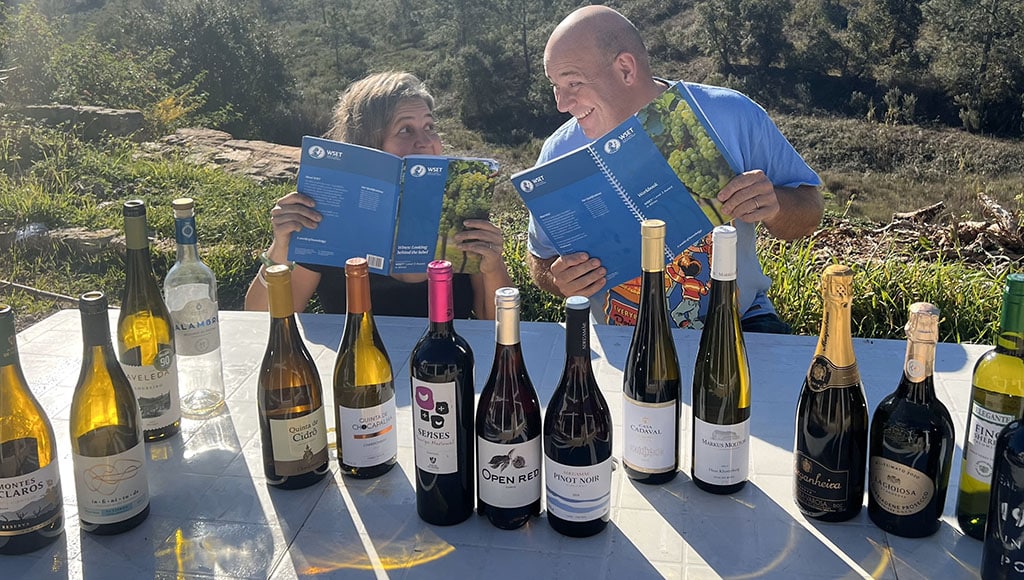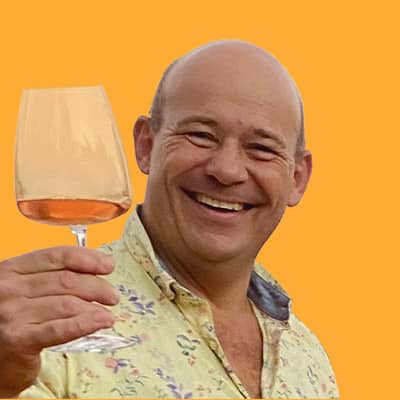We didn’t give up our jobs and move to the Alentejo just for the great wine, but since we arrived, wine has taken a central role.
Portugal was the obvious choice for us, a spectacular view helped us choose our home, but, in retrospect, we should have thought about the off-grid thing a little longer.
Once we cut down the overgrown trees and cleaned up the land, we discovered a small line of unirrigated, scraggy grape vines and it got us thinking.
Maybe we could plant some more grapes and make some wine? But it was one of those things you think and then immediately scold yourself for considering.
My wife’s father was from the Alentejo and was a keen ambassador for the region’s big, bold, strong reds: we liked what we tried.
Our first house-hunting visit involved a treasure map of possible houses or land with a ruin, but the journey was structured around pousadas and wine estates.
We toured and we tried, we pondered and we pontificated, and we found some wonderful whites and some beautiful red blends.
In the couple of years before we relocated here, we started reading up on Alentejo wine, realised how much of a gem we’d stumbled onto, and started plotting and scheming.
My professional life has always been about storytelling and there are few businesses more based around “the story” than the wine industry.
Let’s face it, you can sell a bottle of wine for as much as you like if the story’s good enough. And there are some amazing stories out there.
My old job as a foreign correspondent involved moving somewhere in the world, finding good stories and telling them to a UK and worldwide audience.
I did TV but loved making radio – if you think about it, the pictures are always better on radio because sound taps straight into your brain and engages directly with your imagination.
And with so many things I don’t (or didn’t) know how to do in Portugal – like living off the grid, building an eco-lodge … and then running it -the idea of making radio was calming.
The two collided into an idea – let’s create a podcast on Alentejo through wine.
The journey began at our closest winery – Vicentino – here on our wonderful wild western coast.
It turns out they’re one of the biggest producers of Pinot Noir in Portugal and produce wines very different from most others in Alentejo because of their proximity to the ocean.
Owned by a Norwegian who’s been here almost 40 years, there is no shortage of stories and, in our interview, somehow he connected French grapes, cat pee and The Beatles.
We decided to travel the Alentejo to discover the history and geography of this vast region which covers a third of the country.
Not being wine experts, but rather interested amateurs, we set out to learn about wine and winemaking as outsiders and ask our listeners to join the journey.
Portuguese wine is accessible to everyone here, so why shouldn’t that be the case all over the world?
But by meeting some of the country’s top winemakers, we hope the podcast will also appeal to wine buffs wanting to bone up on their Portuguese wine conversation.
Our second stop was the famous Esporão winery in Reguengos de Monsaraz, close to the Spanish border and the Alqueva Dam.
It turned out to be a great place to use to tell the recent wine history of Alentejo since the 1980s through some of its iconic winemakers: Luís Duarte, David Baverstock and Sandra Alves.
We soon discovered that wine was introduced to Portugal by the Phoenicians, but then wondered if it might have been the Tartessians (and they’re a story for another day).
Either way, the Romans took it to another level, bringing in grapes and growing techniques which built the foundations of Portugal’s wines today.
Vinho made the Roman way in amphorae, known in Portugal as talha, is still made today, and some places claim to have made it like that for nearly 2,000 years unbroken.
The Moors sort of tolerated winemaking for the 450 years they were in Portugal, but the Christians embraced it for their sacrament over the centuries that followed.
But it was the Estado Novo of the Portuguese dictator António de Oliveira Salazar which almost destroyed Alentejo’s millennia of wine production by ordering the vines uprooted and replaced by cereals.
Yet today there are still 350 different types of grapes grown in Portugal – 250 of them indigenous.
We learn about the grapes and winemaking, but also about the vines themselves and we hope to plant half a hectare of Portuguese varieties if the wine authority gives us permission.
A new episode of Ana & Al’s Big Portuguese Wine Adventure goes live every Saturday and I’m also making some extra midweek deep-dive episodes.
You can listen wherever you get your podcasts (as they say in podcast-land!), but if you follow the blog, you’ll get loads of extra articles and info – and an email every time the next episode is ready to hear.
I’d love to know what you think. Please have a listen and let me know. If you like it, please tell your friends; if you hate it, don’t tell anyone.
ALASTAIR LEITHEAD is a former BBC foreign correspondent now living off the grid in rural Alentejo. You can find Ana & Al’s Big Portuguese Wine Adventure wherever you get your podcasts, or sign up here for his wine blog. He’s on Instagram @vale_das_estrelas.




















